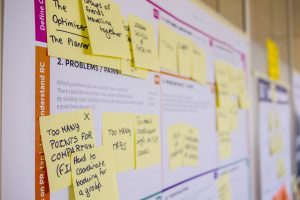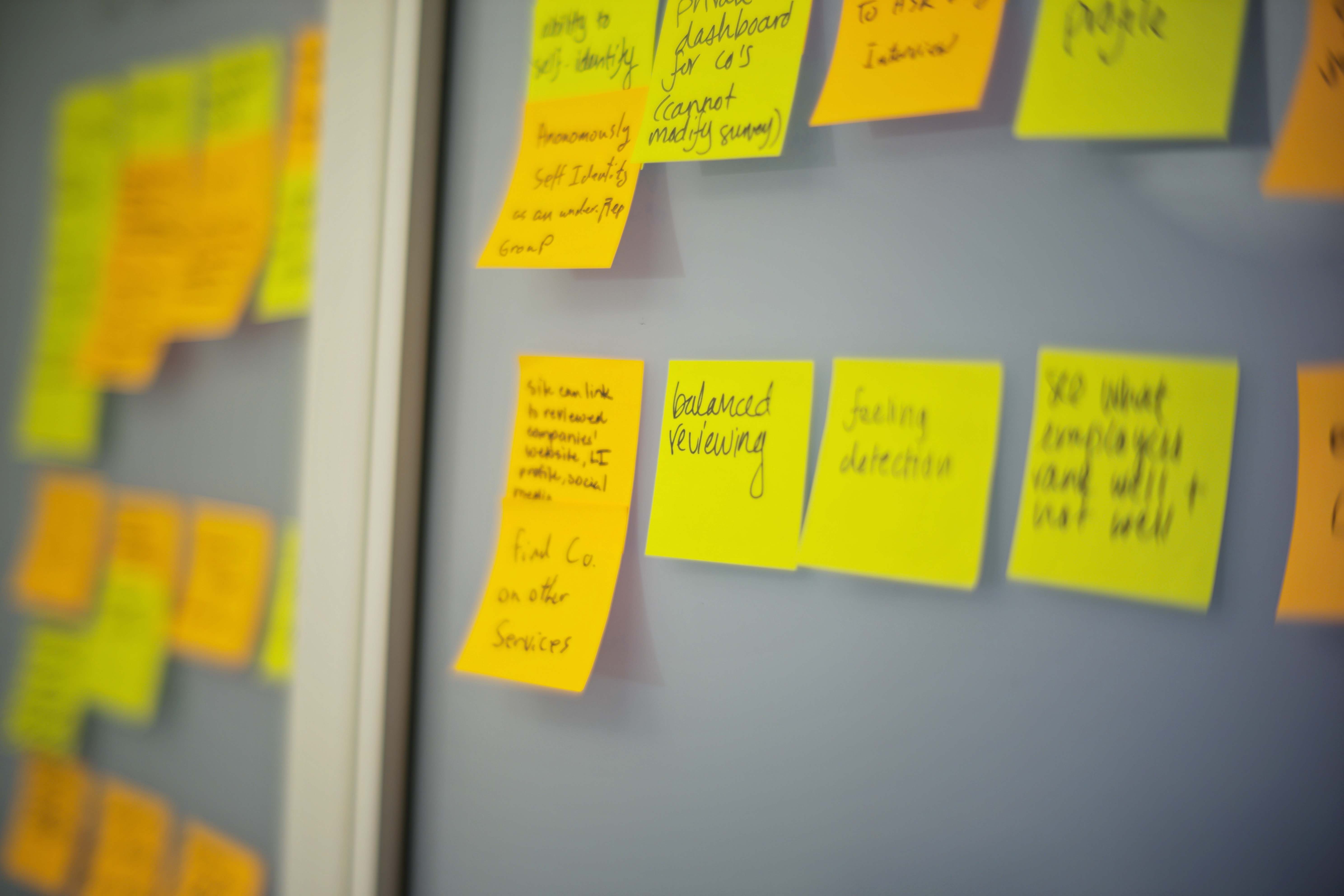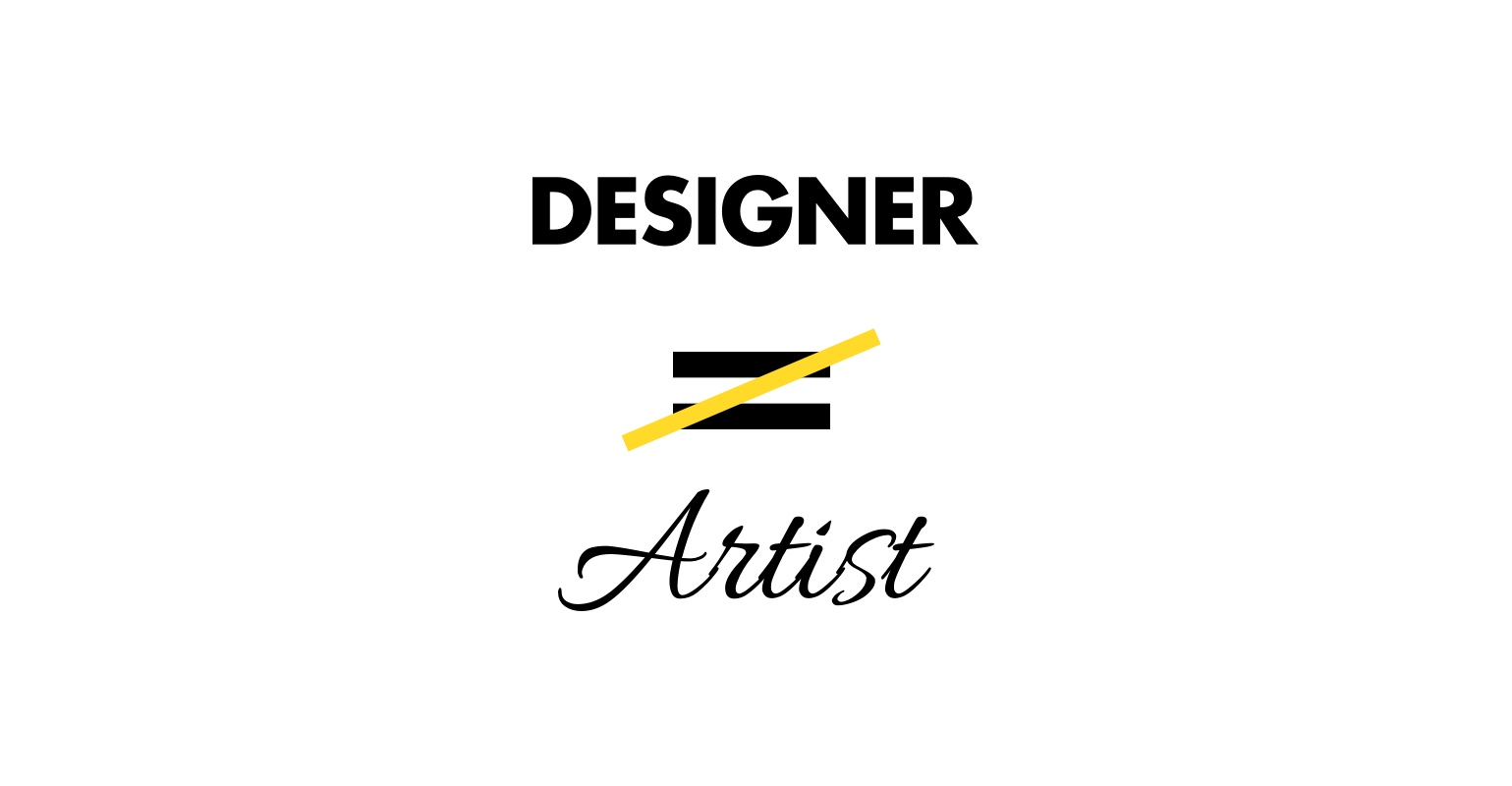The development of any digital product is costly both in terms of time and money. The choices you make with your development can be deeply intimidating, what happens if you invest a lot of money and they are left with a product that neither you or your customers are happy with? So to avoid wasting your time, money and reputation let’s investigate how useful a design sprint is, and how in four days you can save you time, money and reputation damage. Sounds too good to be true? Well, let’s see how a design sprint can positively impact your digital product roadmap.

What is a design sprint?
A design sprint is four days in which a designer and project manager will help you actualize your concept. They will align your team to help solve problems and guide your team by defining the goals of the project. Design sprints are proven to increase the efficiency, focus, and speed of your project and dramatically reduce the risk of failure. At the end of the four days, you will have a working digital prototype that will be tested by real users rather than letting the market decide how good your product is. A design sprint is a flexible product design framework that serves to maximize the chances of making something people want or in the words of Jake Knapp, ““It’s a “greatest hits” of business strategy, innovation, behavioral science, design, and more—packaged into a step-by-step process that any team can use.” Sounds good so far? Let’s find out if a design sprint could work for you.
Who are design sprints for?
No matter who you are, if you are developing a digital product of any kind you will need a design sprint as there are benefits for every possible business sector. For startups, too many products go to market without any customer validation, leaving their reputations at the mercy of user reviews. Startups can use design sprints to maintain the speed to market while including the necessary research and design thinking to streamline the user experience and make sure everybody is happy with the product before it goes to market. Again to quote Jake Knapp “When we talk to startups about sprints, we encourage them to go after their most important problem. Running a sprint requires a lot of energy and focus. Don’t go for the small win, or the nice-to-have project, because people won’t bring their best efforts. They probably won’t even clear their schedules in the first place.”
Enterprises can use a design sprint to accelerate learning and reduce the amount of invested resources for exploration of product ideas and concepts. Design sprints help enterprises to accelerate their product design and development and open the door to a fast-moving, startup-like environment where the results are derived from test-driven development.
When a design sprint is not needed? When there isn’t enough information up front to begin the process. Before beginning a design sprint you should know the overall vision for the product, any customer needs and feedback. How the product currently works from a technical perspective and any previous efforts to solve this problem, and what was learned from them. If there isn’t a product design problem you can also choose to not have a sprint or if there is no chance that an effective prototype can be produced within the time frame.

When could I use a design sprint?
It doesn’t matter at which stage you are at on your product development. At the beginning of a project, a design sprint can be extremely useful to initiate a change or start the innovation of a product concept.
If you are in the middle of a project, a sprint can be useful to start a new cycle of updates, expanding on an existing concept or exploring new ways to use an existing product.
It’s never too late for a design sprint even if you are in the mature stage of your project. For a mature project, it’s still beneficial to have a design sprint to test a single feature or subcomponent of a product and get immediate feedback rather than leaving it at the mercy of public scrutiny that could result in poor reviews and ultimately unhappy customers.
 A design sprint consists of five stages:
A design sprint consists of five stages:
Stage one is where the team is brought together to understand their product by reviewing its background and evaluating user insights, this ensures you have the best starting point.
Stage two is to get your team to diverge on the product. Brainstorming what’s possible using your team allows for everybody to have a much clearer idea of what improvements can be made to the product and allows everybody to contribute their ideas in a non-competitive and democratic fashion.
Stage three is to converge, where the team ranks solutions, and picks the best possible solution for their digital product.
Stage four is to prototype; this is the stage that creates a minimum viable concept which will allow the team to see their solution implemented and to assess the success of the chosen solution.
The final stage is to test and observe what’s effective for users and to take note of their feedback and to make amendments based on user feedback.

In conclusion:
Design sprints produce tangible validated results in only 4-days; they are suitable for solving complex problems by minimizing discussions and maximizing results. A design sprint also results in an optimal alignment of your product team throughout the process.
Further benefits of design sprints include making decisions easier with tangible results and valuable real user insights rather than leaving it up to public scrutiny. The sprint outcomes can be an input for your product development team resulting in a more streamlined development roadmap. Jake Knapp also concluded, “Get that surface right, and you can work backward to figure out the underlying systems or technology. Focusing on the surface allows you to move fast and answer big questions before you commit to execution, which is why any challenge, no matter how large, can benefit from a sprint.“
Hopefully, this article has given you a better understanding of what a design sprint is, what the process involves and how it can benefit you and your users. For further reading, I suggest Jake Knapp’s excellent, “Sprint: How to Solve Big Problems and Test New Ideas in Just Five Days.”
Thinking you could benefit from a design sprint? Why not drop us an email and see what an ideal digital product partner can do for you.


